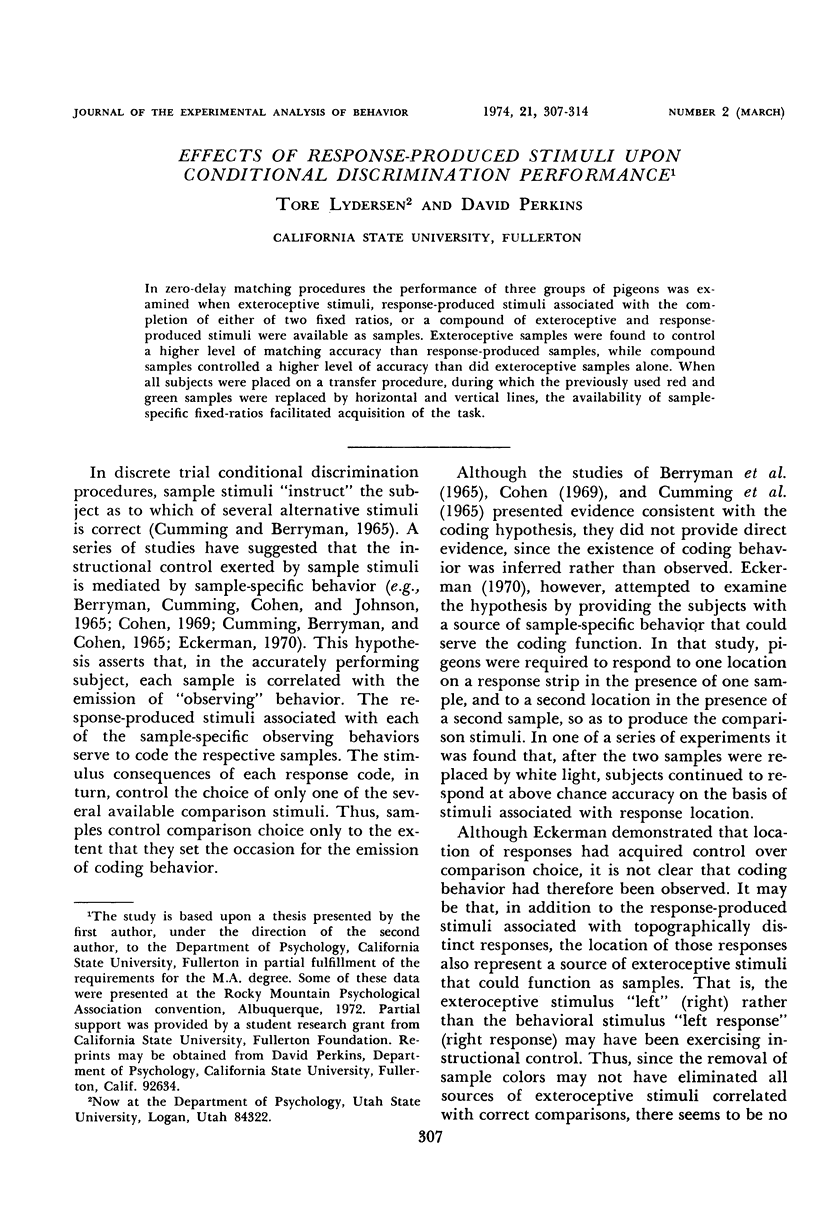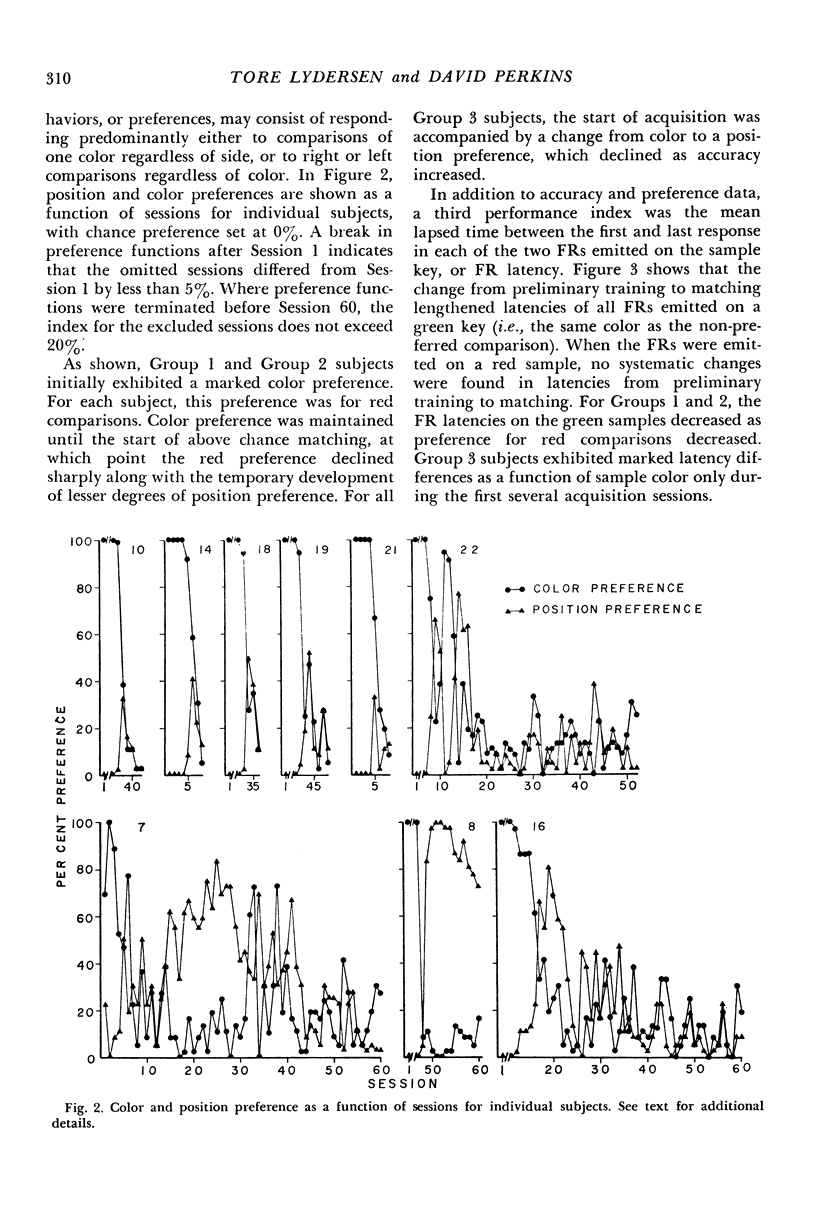Abstract
In zero-delay matching procedures the performance of three groups of pigeons was examined when exteroceptive stimuli, response-produced stimuli associated with the completion of either of two fixed ratios, or a compound of exteroceptive and response-produced stimuli were available as samples. Exteroceptive samples were found to control a higher level of matching accuracy than response-produced samples, while compound samples controlled a higher level of accuracy than did exteroceptive samples alone. When all subjects were placed on a transfer procedure, during which the previously used red and green samples were replaced by horizontal and vertical lines, the availability of sample-specific fixed-ratios facilitated acquisition of the task.
Full text
PDF







Selected References
These references are in PubMed. This may not be the complete list of references from this article.
- BLOUGH D. S. Delayed matching in the pigeon. J Exp Anal Behav. 1959 Apr;2:151–160. doi: 10.1901/jeab.1959.2-151. [DOI] [PMC free article] [PubMed] [Google Scholar]
- Berryman R., Cumming W. W., Cohen L. R., Johnson D. F. Acquisition and transfer of simultaneous oddity. Psychol Rep. 1965 Dec;17(3):767–775. doi: 10.2466/pr0.1965.17.3.767. [DOI] [PubMed] [Google Scholar]
- Cohen L. R. Generalization during acquisition, extinction, and transfer of matching with an adjustable comparison. J Exp Anal Behav. 1969 May;12(3):463–474. doi: 10.1901/jeab.1969.12-463. [DOI] [PMC free article] [PubMed] [Google Scholar]
- Cumming W. W., Berryman R., Cohen L. R. Acquisition and transfer of zero-delay matching. Psychol Rep. 1965 Oct;17(2):435–445. doi: 10.2466/pr0.1965.17.2.435. [DOI] [PubMed] [Google Scholar]
- Eckerman D. A. Generalization and response mediation of a conditional discrimination. J Exp Anal Behav. 1970 May;13(3):301–316. doi: 10.1901/jeab.1970.13-301. [DOI] [PMC free article] [PubMed] [Google Scholar]
- Pliskoff S. S., Goldiamond I. Some discriminative properties of fixed ratio performance in the pigeon. J Exp Anal Behav. 1966 Jan;9(1):1–9. doi: 10.1901/jeab.1966.9-1. [DOI] [PMC free article] [PubMed] [Google Scholar]
- RILLING M., MCDIARMID C. SIGNAL DETECTION IN FIXED-RATIO SCHEDULES. Science. 1965 Apr 23;148(3669):526–527. doi: 10.1126/science.148.3669.526. [DOI] [PubMed] [Google Scholar]
- Rilling M. Effects of timeout on a discrimination between fixed-ratio schedules. J Exp Anal Behav. 1968 Mar;11(2):129–132. doi: 10.1901/jeab.1968.11-129. [DOI] [PMC free article] [PubMed] [Google Scholar]
- Rilling M. Number of responses as a stimulus in fixed interval and fixed ratio schedules. J Comp Physiol Psychol. 1967 Feb;63(1):60–65. doi: 10.1037/h0024164. [DOI] [PubMed] [Google Scholar]
- Weiss S. J. An effective and economical sound-attenuation chamber. J Exp Anal Behav. 1970 Jan;13(1):37–39. doi: 10.1901/jeab.1970.13-37. [DOI] [PMC free article] [PubMed] [Google Scholar]


